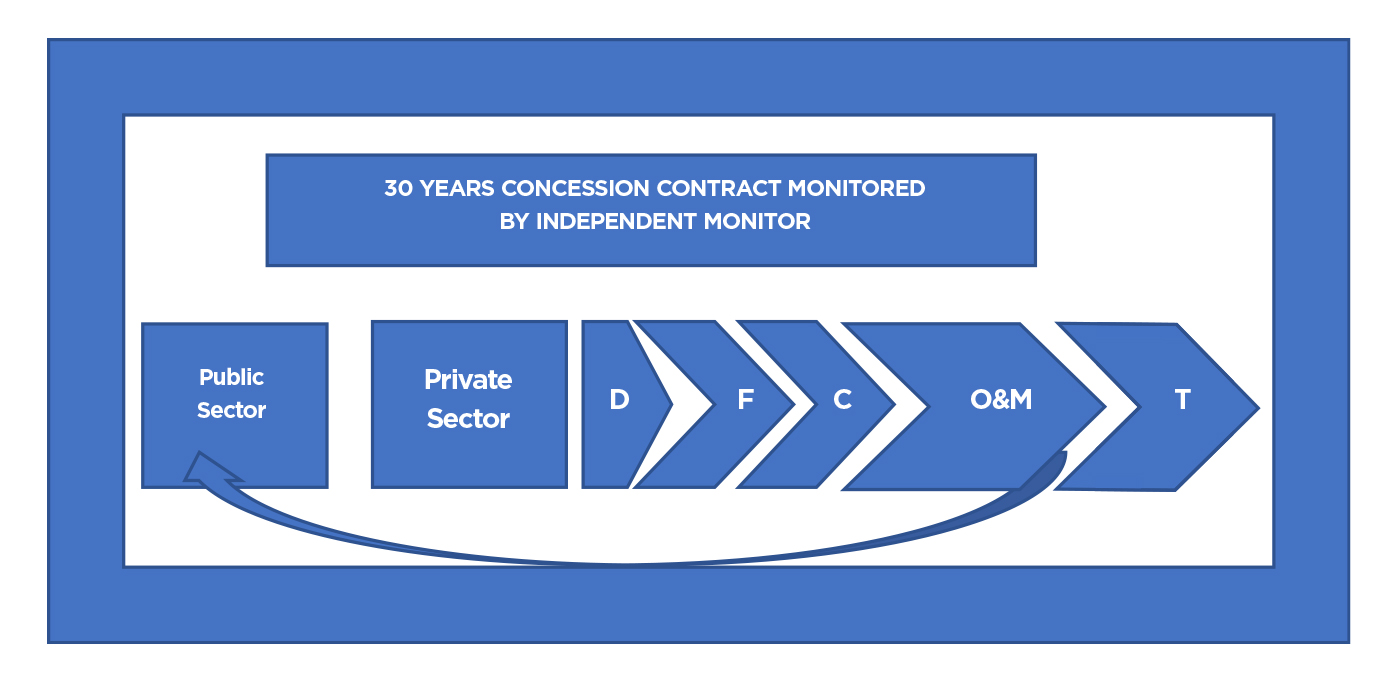Public Private Partnerships: It’s all about transparency and trust
Public Private Partnerships: It’s all about transparency and trust
What are the roles and responsibilities of the private party in a Public Private Partnership arrangement? PROF JOHN MALULEKE explains.
My previous article, published in Issue 3, focused on Public Private Partnerships (PPPs) with specific reference to the responsibilities of the public sector party in managing economic infrastructure. While the public sector takes ownership of economic and safety regulatory oversight of the economic infrastructure, it still needs to partner with the private sector to be effective and sustainable.
The private sector is encouraged to be innovative by introducing various strategic option models such as “design, finance, construct, operate, maintain, and transfer”. For this to happen, there have to be three parties involved in the process:
- Competent transactional advisory team
- Committed and willing concession granting authority
- Potential competent and experienced consortium of companies (a concessionaire in the making)
Bidding process to appoint a Special Purpose Vehicle (SPV)
When the national road transport infrastructure PPP was introduced in South Africa, the SA National Roads Agency (SANRAL) served as a concession-granting authority. The entire strategic supply chain management was facilitated by SANRAL’s transactional advisory team, while the team was guided by a project information memorandum aligned with the World Bank Supply Chain Management principles for executing PPP projects.
Selection process of a suitable private sector party
The introduction of PPP projects is a legitimate process that opens doors for market competition, and these projects have now gained momentum in South Africa. The outcome of competition for the market precipitated the appointment of concessionaires: TRA for the Pretoria/Maputo corridor, Bakwena for the N1/N4 project, and N3TC for the N3 Toll route from Heidelberg in Gauteng to Cedara in KwaZulu-Natal. These appointed consortia underwent a rigorous PPP supply chain management process that ensured adherence to confidentiality, disclosure, and transparency.
Output specifications
Output specifications are becoming more important for contemporary economic infrastructure concessions. These are often referred to as “performance specifications” and are designed to give a clear indication of the expected performance outcome from potential winning bidders. The output-based specifications enable potential private bidding parties to exercise a latitude of flexibility, especially when introducing significant technological innovations in response to requests for bids.
The importance of output specifications in concessions
The output specifications of a project encourage or allow suppliers to be creative and thus strive to craft an appropriate demand-responsive product or service strategy. The detailed specification is in the hands of the supplier. Where applicable, performance specifications are preferrable because they allow wider competition and enable suppliers to suggest new or improved ways of meeting requirements. When services are being acquired or purchased, it is often not possible to prescribe a conformance specification, as the service provider alone knows how to render the required services. In this situation, the customer’s role is to enable the product or service supplier, by outlining and conveying the intended anticipated outcome.

PPP Models – Key Responsibilities For The Private Sector
Design
In the construction industry, there tends to be a distinct division between contractors who are expert builders and those who are expert designers. When the PPP design model is adopted, this mainly occurs where the economic infrastructure is greenfield or has to be fully rehabilitated and expanded.
Finance
During the operation of a PPP project, the concessionaire manages its finances with a view to consistently achieving adequate debt service and loan life cover ratios, as well as a favourable return on equity for the shareholders, commensurate with the project risk. Both debt and equity are used in the funding of PPP projects, with a typical structure of 17% equity and 83% debt.
Construct
The signing of a PPP contract does not necessarily lead to the beginning of construction. When financial closing has been achieved, one can conclude that the project execution conditions have been satisfied and therefore the construction phase can commence. Practically, the concession company’s procurement committee would then manage all supply chain matters and ensure adherence to socio-economic compliance.
This phase often comes with many challenges, particularly the fact that almost everybody wants to be able to participate in construction projects. The best approach to deal with this phase is to adopt the stakeholder participation and consultation exercise. Members of the community and civil society alike should be guided by project champions assigned using public participation processes.
Operate and Maintain
The concession contract also regulates the operation and maintenance of the infrastructure in accordance with good industry practice and the standards and specifications of the implementing authority.
Socio-economic development
After the potential concession company has been appointed, it is viewed as a Special Purpose Vehicle (SPV). This is meant to conclude contractual agreements with the contracting authority. For the operation to take place unhindered, it needs to comply with the contract as well as the laws of the country (in South Africa, for example, particularly Broad-Based Black Economic Empowerment compliance).
After the construction of economic infrastructure, there will be time to perform periodic routine maintenance on this infrastructure. This phase of the project raises a lot of expectations from communities along the economic infrastructure corridor. Worst of all, there is an emerging trend of people claiming to represent the business community causing disruptions in the construction industry.
What is a concession contract meant to do?
A concession contract typically defines the private party’s obligations in terms of service coverage and performance standards, rights, incentives, and risks, including pricing arrangements. The contract offers the private party the right to operate the strategic assets for a specific period of time. Here, the private sector’s role and responsibilities are to operate such assets and ensure that they are being transferred back to the public sector at the end of the concession period. It is worth mentioning that a concession contract grants a private party the exclusive right to provide a service on behalf of government for a specified period of time. This is done by affording the private sector an opportunity to instil innovation in the road network industry by adopting and executing capital-intensive facilities such as open tolling gantries.
What is the independent monitor’s role?
The government keeps an eagle eye on the efficient and effective management of concession contracts. The concession contract makes it mandatory to appoint an independent monitor (independent engineer) to ensure the transparent execution of the contract according to the contract’s standard operating procedures. Once again, it is not the responsibility of civil society to get involved in unnecessary protests, as government has a competent third party to serve as a compliance monitor. The independent monitor’s main role is to provide the contracting authority with an independent assessment of performance under the contract.
Conclusion
In a PPP, there has to be transparency and trust between the two parties. Members of the community should not allow themselves to be used by people claiming to represent them. If members of the community want to stay informed about a project, they need to consult the right institution that has the authority to disseminate the correct information. Lastly, the asset needs to be transferred (at no cost) back to the implementing authority at the end of the concession period, in accordance with the hand-back criteria as stipulated in the concession contract and signed off by the implementing authority and independent monitor.
Published by
John Maluleke
focusmagsa




